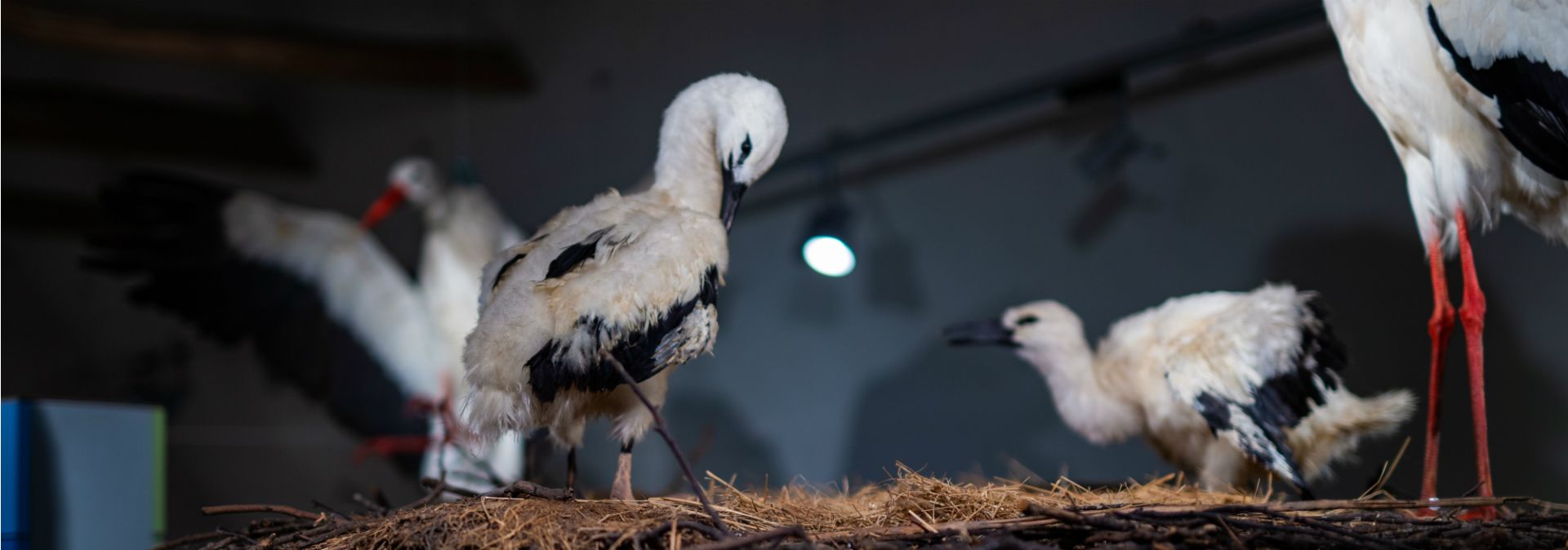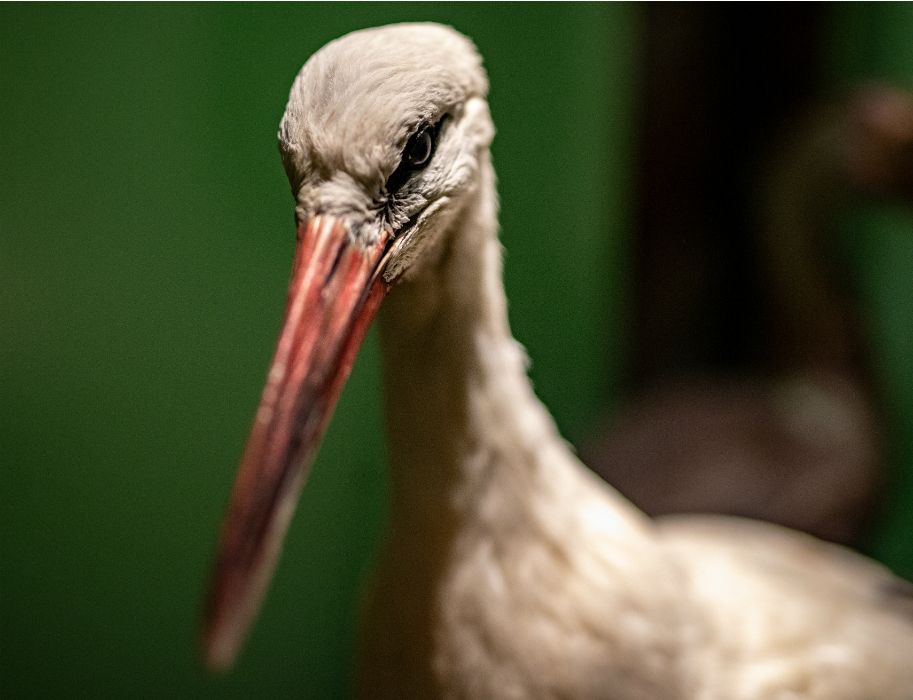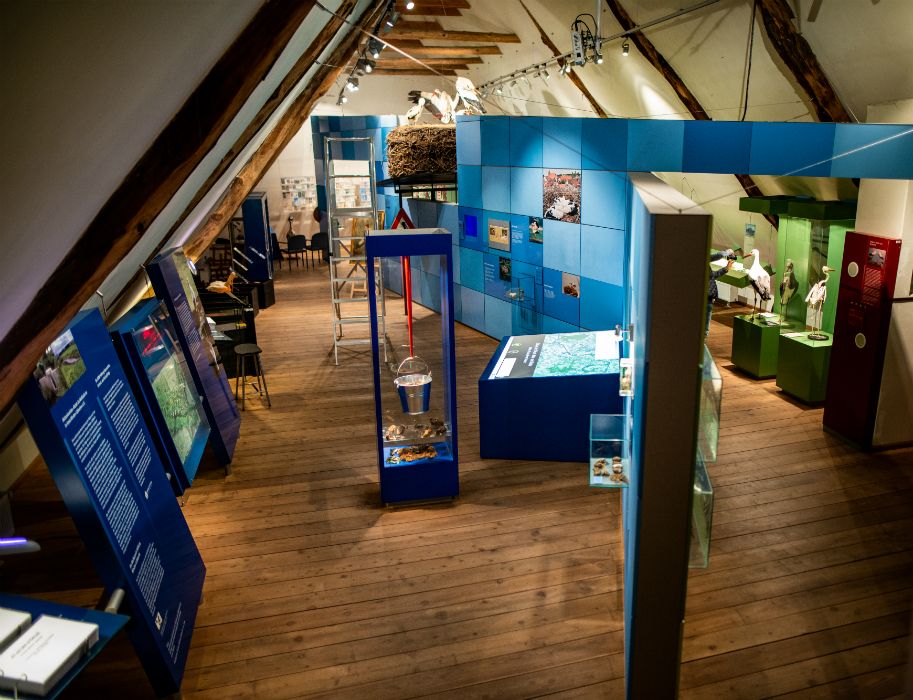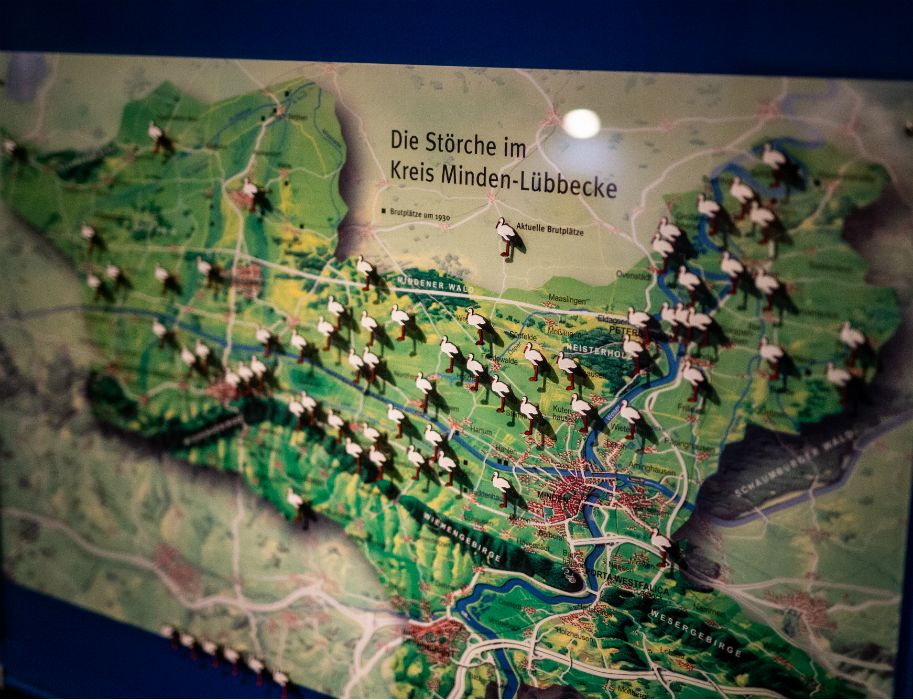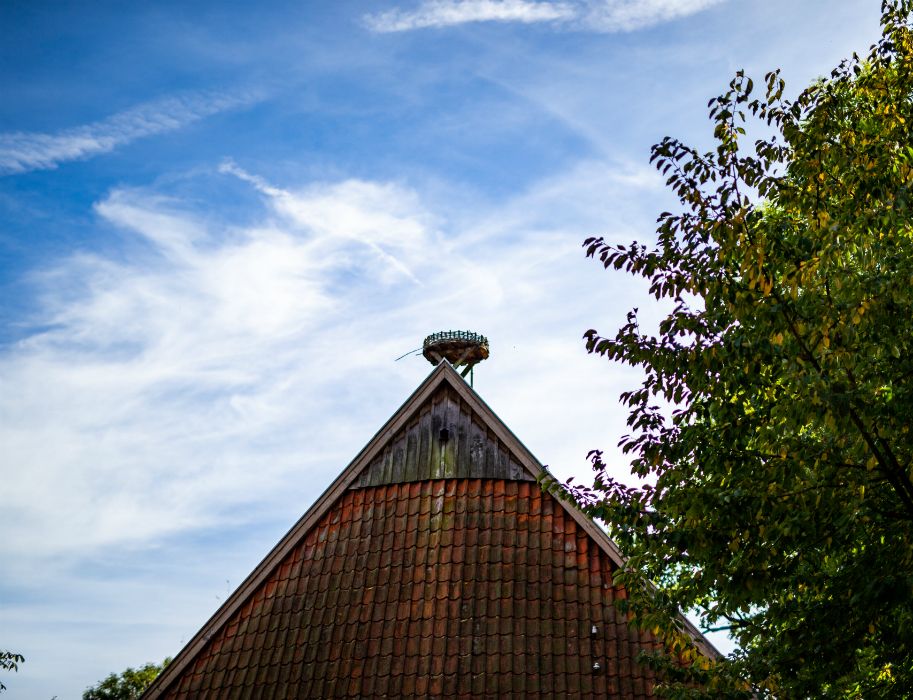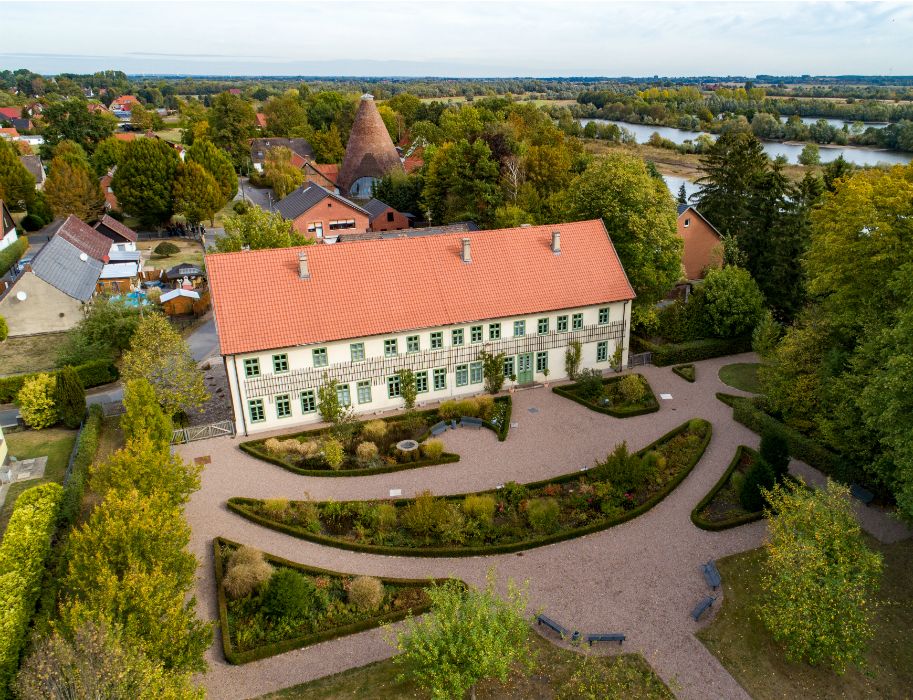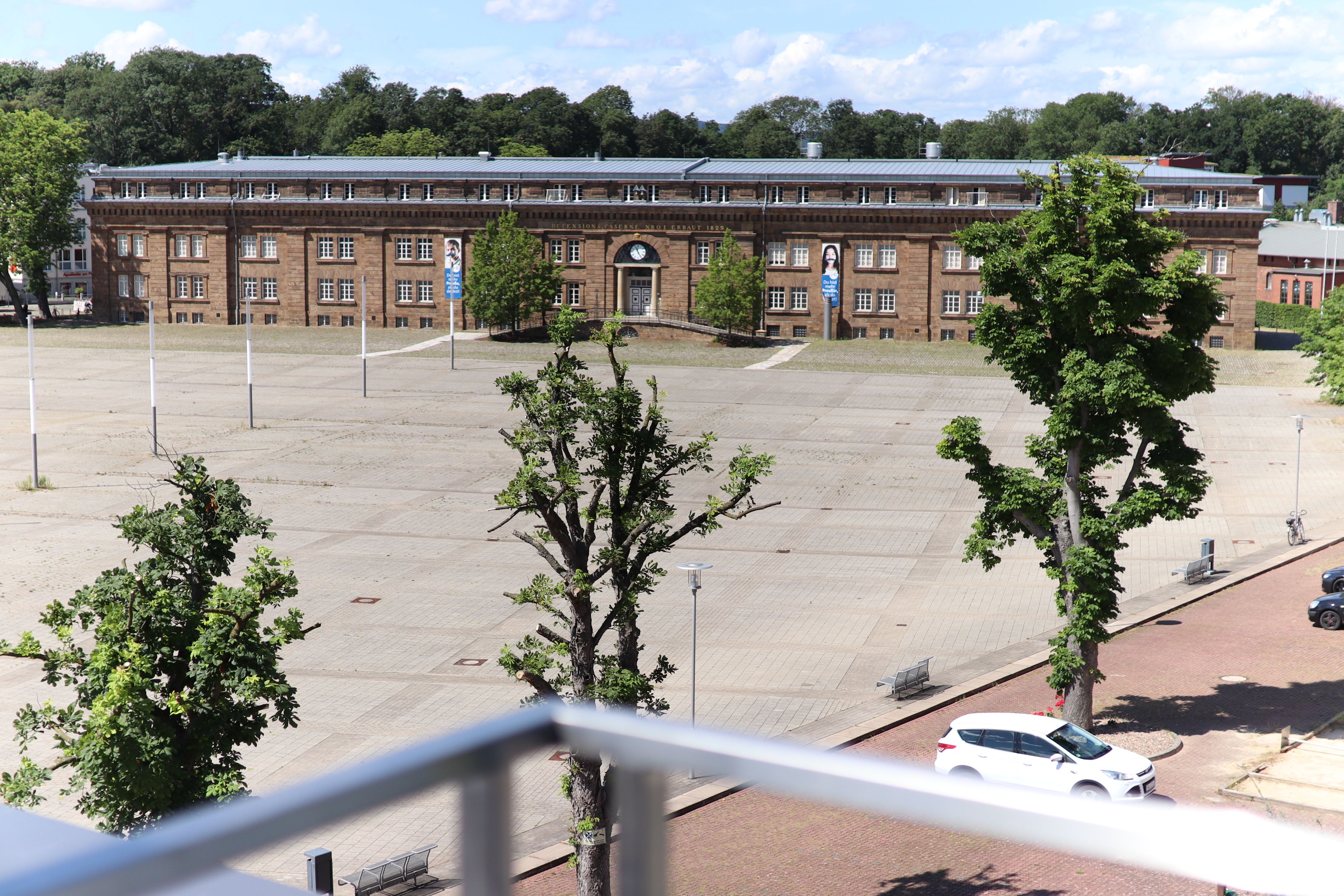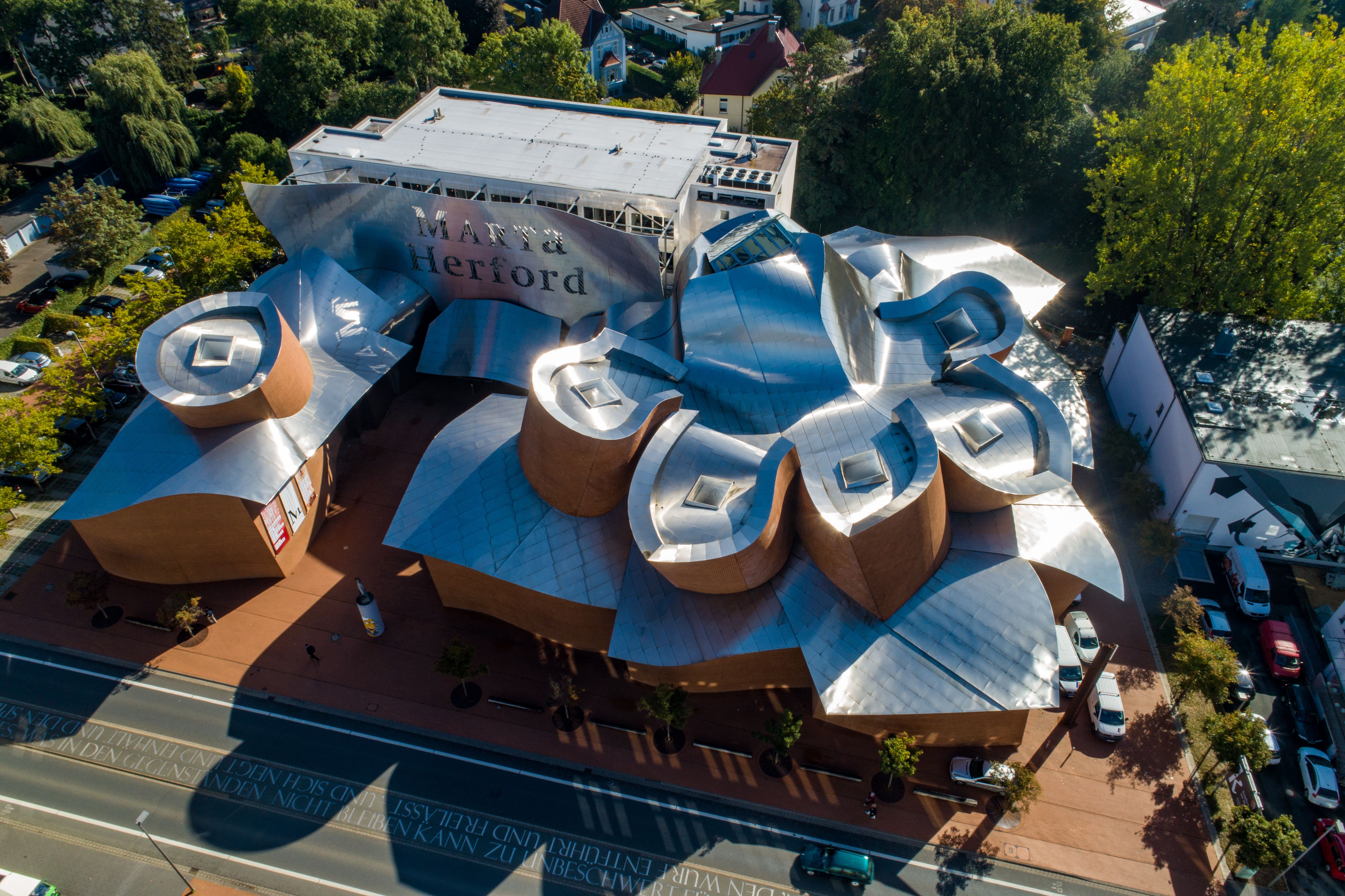For a long time, they were rarely seen. While the white stork was still part of the rural idyll in the first half of the 20th century, by the 1980s only a few pairs were still breeding on roofs, trees and nesting aids throughout the country. At the Westphalian Stork Museum "Haus - Heimat - Himmel" in Petershagen in the Teutoburg Forest tourist region, visitors can find out why storks have now returned to East Westphalia-Lippe and how the region is working to preserve their natural habitat.
First of all, for those who still don't know: the stork does NOT bring the children. Every child knows that. Nevertheless, there is a special relationship between the majestic bird and the humans it once followed into the villages. But it was also man who almost deprived it of its livelihood through intensive land use and the drainage of entire stretches of land. At the end of the 1980s, there were only three breeding pairs left in the Minden-Lübbecke district, where the action committee "Rettet die Weißstörche e.V." (Save the White Storks) has been campaigning for the preservation of the animal ever since and has even built a unique museum for it.
Stork's nest from the chimney
The centrepiece of the "House - Home - Sky" exhibition in the attic of the half-timbered house Windheim No2 is something that visitors have probably never seen up close before: an original stork's nest that was once perched on the chimney of an old dairy. The nest, in which the stork raises its offspring from April to June, measures up to two metres in diameter. It can weigh up to two tonnes, while the stork itself "only" weighs just under three and a half kilos.
Visitors to the museum are given a clear explanation of how, where and what it lives on. An interactive media model takes them on a virtual tour of the Weser floodplain and the Bastau meadows, where more than 50 pairs of storks now spend the summer again. There are also numerous specimens and models as well as films and audio stations. Among other things, you can hear the typical rattling sound with which the white stork announces its arrival in spring and then departs for Spain and Africa in autumn. And of course there's also something to smile about: in the impressive collection of postcards and cartoons with drawings by Marunde, Uli Stein and Tetsche, among others, you're sure to find a picture of a stork carrying a bundle with a baby in its beak. But, see above.
If you still don't believe it, you are guaranteed to see a real stork along the stork route between April and August/September. The cycle path in the Weser floodplains leads through beautiful Weser villages with manor houses, old churches and mills - and numerous "inhabited" stork nests.
A museum for Adebar
In an old farmhouse dating back to 1701, you can meet the now rare white stork. A museum has been dedicated to the proud bird, where you can learn all about its habitat, its behaviour, its enormous wingspan and the many dangers to which it is exposed.
Surrounded by the gentle meadows of the Weser is the small island of Petershagen-Windheim with numerous old, typical red brick houses.
In an old farmhouse dating back to 1701, you can meet the now rare white stork. A museum has been dedicated to the proud bird, where you can learn all about its habitat, its behaviour, its enormous wingspan and the many dangers to which it is exposed. The "Atlas of Storks" reveals why the animal feels at home again in the Minden-Lübbeke district.
Afterwards, you can enjoy the rural idyll with a piece of homemade cake in the Hofcafé No2 in the historic hallway or in the beer garden, while the children learn to walk on stilts in the stork playground. Alternatively, you can take a seat in front of a historic mill at the Landgasthaus zur Mühlenwirtin, which is a great place to stop on a bike tour with friends or family.
The best way to explore the East Westphalian countryside is by bike. You can discover other sights in the region on the Weser cycle path, the stork route or the mill route. Or you can join a guided excursion to the Weser floodplain bird sanctuary and, with a bit of luck, watch storks catching frogs live.
Excursion tip: The Petra Solara solar ferry is just 200 metres from the museum. It takes you on a leisurely trip across the Weser.
Overnight tip: "Dat lüttke Hues", a guest house with a small garden next to the museum or the "Phönix" museum workshop guesthouse.
